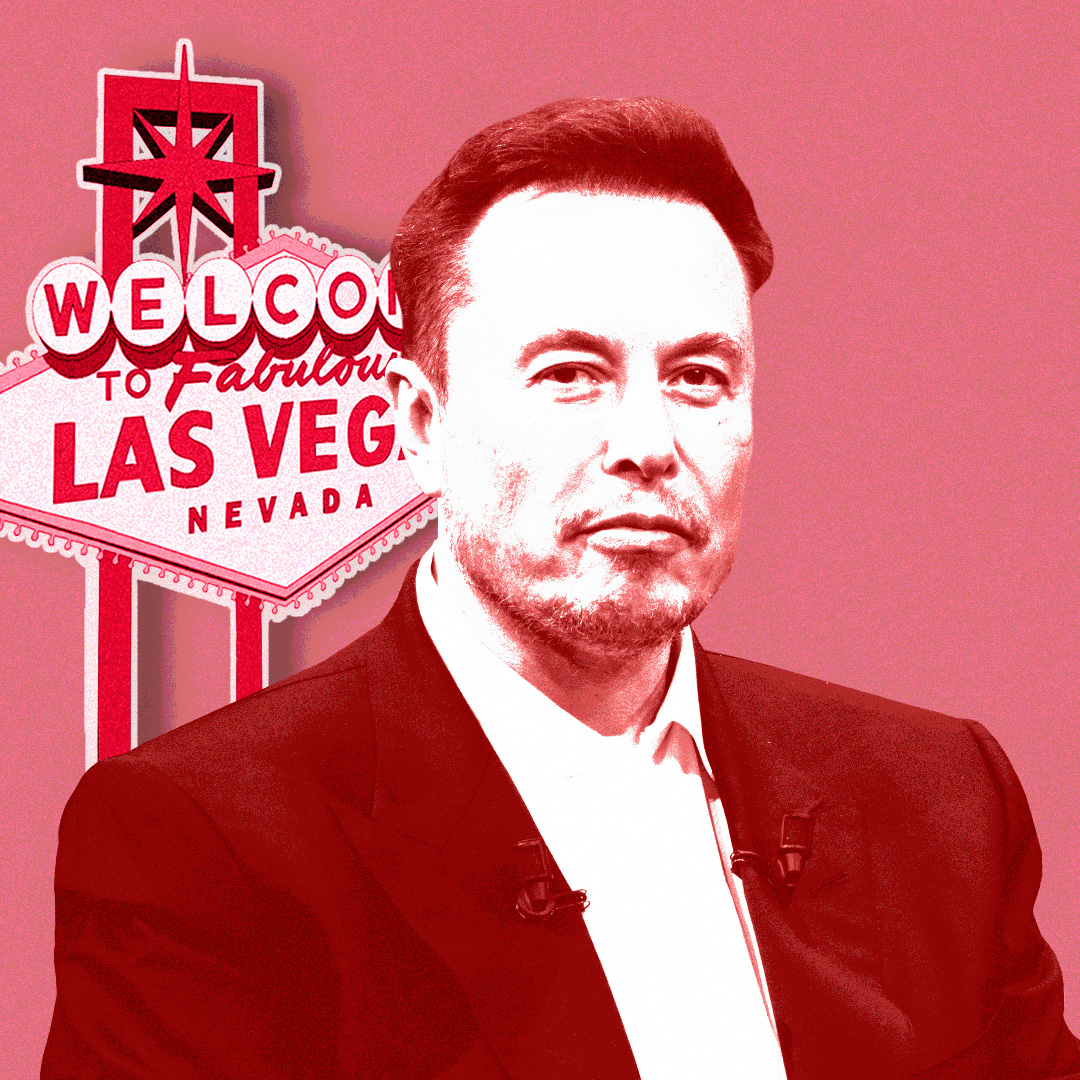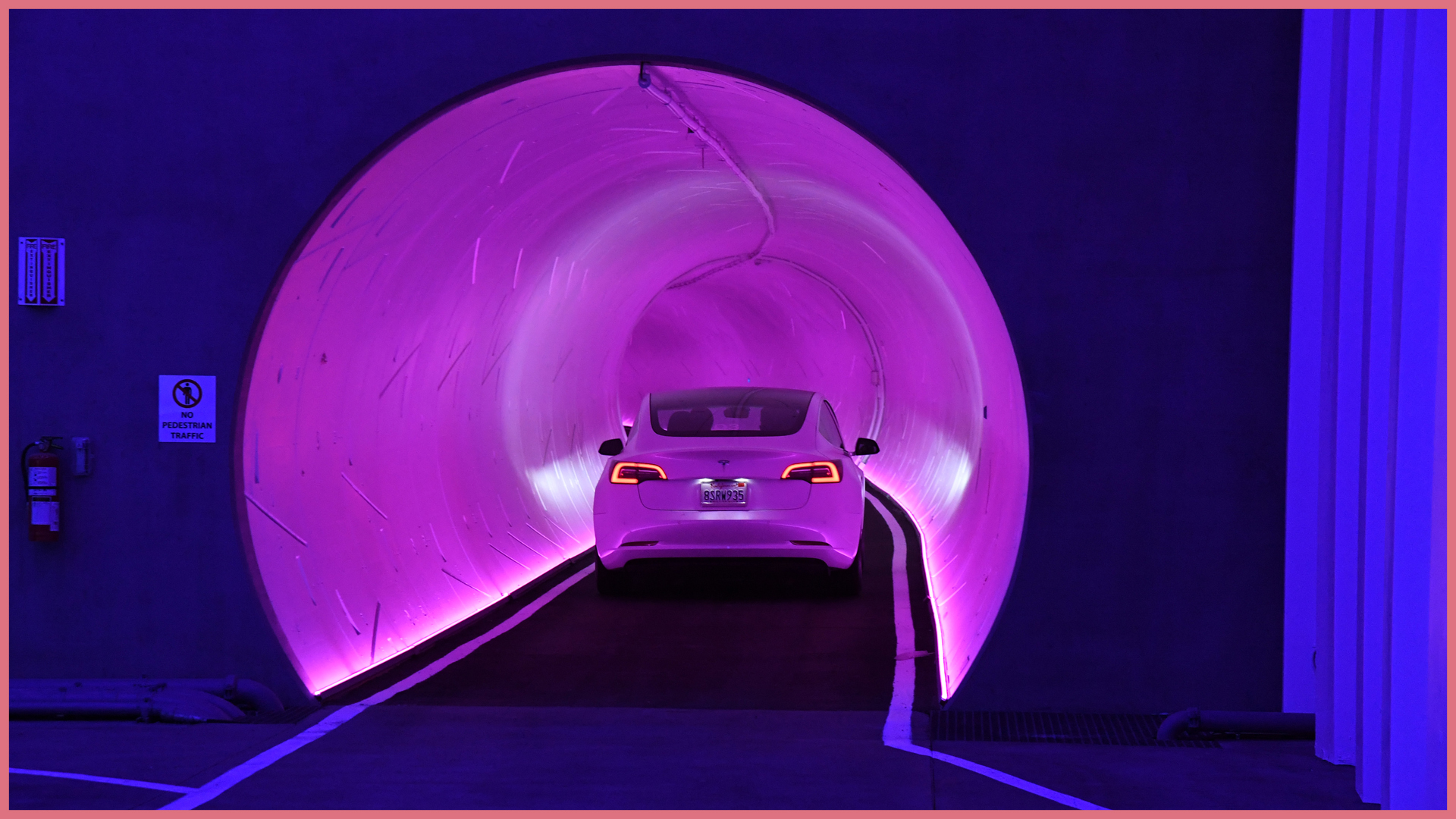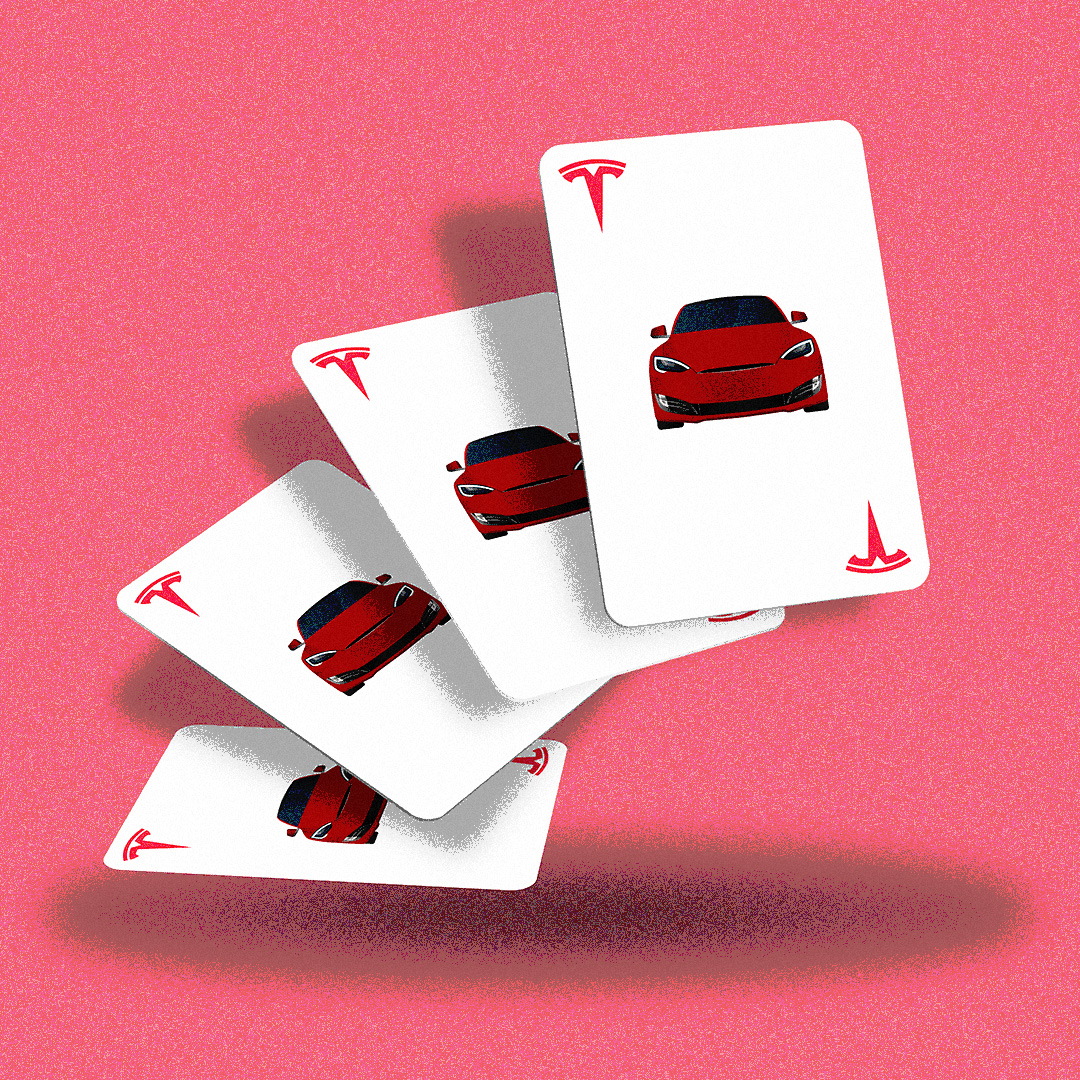The outspoken billionaire Elon Musk has never been one to shy away from a challenge. Finding himself stuck in traffic one day in December 2016, he tweeted that it was driving him “nuts” and he was “going to build a tunnel boring machine and just start digging.”
Soon after, The Boring Company (TBC) was formed and work began on the world’s first underground transit system for electric cars under the streets of Las Vegas.
The Las Vegas Convention Center Loop (LVCC Loop), also referred to as ‘Teslas In Tunnels’, opened in June 2021 and stretches for 2.7km. A fleet of 70 cars shuttles paying passengers between five stops located around the Las Vegas Convention Center and Resorts World.
The system is relatively small, but TBC has big ambitions to expand it. In August this year, Las Vegas City Council unanimously approved plans to build 65 miles of tunnels and 69 stations across the city centre. Stops include casinos, the airport, retail zones, the University of Nevada Las Vegas campus and residential areas.
Freed from the traditional constraints of above ground city infrastructure, the LVVC Loop is an interesting proof of concept. TBC has billed it as a sustainable and cost-effective alternative to building more roads and overpasses, and its tunnel boring machines (TBMs) aim to slash the time and cost of digging compared to existing technology. The system is, in theory, safer – eradicating the potential for collisions with unpredictable pedestrians, buses, and cars.
However, not everyone is convinced by Musk’s tunnel vision. The LVCC Loop is much less impressive than his previous plans for high-speed magnetic levitation trains, vacuum tubes, or even self-driving cars. Instead, riders must sit in Teslas driven by humans at just 45mph.
David Levinson, professor of Transport at the University of Sydney’s School of Civil Engineering, says: “Doing this with private vehicles, rather than something that is efficient for the movement of people, like a train, or even a conveyor belt, is an extremely inefficient use of expensive tunnels.”
Other cities that expressed an interest in the concept have failed to commit to projects, raising questions about its long-term relevance as an urban transport solution.

Road congestion is a major global problem that’s getting worse as people move from rural areas into cities and as economic growth, particularly in developing nations, leads more people to purchase cars. Increasing air pollution impacts on public health and threatens carbon reduction targets, it creates noise and social issues.
London, Paris, Brussels, Moscow and New York are the top five most congested cities in the world, according to traffic experts Inrix. In the US, 47% of urban interstates experience congestion during peak hours, according to the latest report on the state of US infrastructure, by the American Society of Civil Engineers, and 43% of roadways are in a mediocre condition, forcing motorists to spend almost $130bn each year on extra vehicle repairs and operating costs.
“Currently there is a $786bn backlog of road and bridge capital needs,” says Mark Fergus FRICS, executive vice president of Cumming Group, who adds that the $1tr infrastructure bill, introduced by President Biden in 2021, will only provide “a fraction of the support” needed to bring transportation networks into good repair.
Building new transport infrastructure addresses congestion, but faces major hurdles such as difficulties securing permits to develop large, contiguous parcels of land. Plus, heavy civil construction tends to be expensive and disruptive.
TBC claims moving road networks underground provides “high-throughput transportation in an economically viable way,” avoiding the expense and disruption of building elevated highways and cloverleaf interchanges.
“The potential here to radically change the way urban transportation operates is huge,” says Rick Geddes, professor of economics and founding director of the Cornell Program in Infrastructure Policy. “The permits needed for tunnelling are usually much less than for installing a new road on the surface. There are fewer environmental, eminent domain and right-of-way issues.”
Land availability in urban areas is scarce and digging tunnels could minimise its use. Roads could then be repurposed as parks or other community-enhancing spaces.
“It could help clear the way to reclaim heavily trafficked centre of town areas, removing barriers and connecting formerly segregated communities,” says Fergus, who points to examples of defunct freeways transformed into urban parks in locations like Dallas or Boston, and the conversion of the New York Highline into a public park. These helped “revitalise neighbourhoods with greater surface connectivity,” he adds.
Levinson is sceptical about the space-saving benefits: “Until the parking garages are also underground, and the network is ubiquitous, it will still need to surface. These portals are not space-free,” he says.

“Doing this with private vehicles … is an extremely inefficient use of expensive tunnels” David Levinson, University of Sydney’s School of Civil Engineering
The ability to dig tunnels faster and at much lower cost is a key draw of TBC’s high-tech engineering solution. The company claims to have cut the cost of tunnelling by a factor of more than 10, compared to existing solutions, with Loop tunnels currently priced at around US$10m per mile.
Its latest generation ‘Prufrock’ all-electric tunnel boring machine is capable of launching into the ground directly from the surface, performing continuous construction of the tunnel lining, then re-emerging from the ground upon completion.
This speeds deployment to within 48 hours of arrival onsite, says TBC, and removes the need to create drive and reception chambers to launch and retrieve the machine. In addition, the lack of exhaust fumes from an electric unit means tunnels don’t require expensive exhaust vents.
The current version of Prufrock is designed to dig more than one mile of tunnel a week. Compare that to the machine being used to dig tunnels for the UK’s HS2 rail link, which covers around 15 metres a day, albeit for a larger tunnel diameter.
According to TBC’s website, the goal for the next iteration of the machine is to exceed 1/10th of average human walking speed (3mph), equivalent to seven miles per day.

Las Vegas Convention Center Tunnel Loop
“This is an area of heavy civil construction that is overdue for massive innovation,” says Geddes. “If the Boring Company can show they have a new, faster, less expensive technology that would allow many roads to be moved underground, it could transform the nature of urban transport.”
But digging tunnel networks in cities filled with complex subterranean structures like building foundations, car parks and metro stations is a tough proposition.
TBC says its tunnels have a typical minimum depth of 30ft, well beneath most utilities, and can go deeper if necessary. However, Fergus highlights many other obstacles under US cities, such as “methane deposits in Los Angeles, hard rock such as granite and schist in Manhattan, and high water levels,” which could prevent or delay work.
Furthermore, subsurface boring in historic cities, such as London, Rome, Athens “is restricted in certain cases” and the safety of operators and required decompression time to avoid the bends “may also impact on the speed of tunnelling,” Fergus adds.

“It could help clear the way to reclaim heavily trafficked centre of town areas” Mark Fergus FRICS, Cumming Group
Tunnelling complexities aside, decision makers considering a loop for their municipality may be attracted by the unique economic model for construction and operation being deployed in Las Vegas.
Where most transport systems worldwide rely on some form of public funding, in Nevada, TBC finances the tunnels, operates the system and takes revenue from ticket sales, while casinos and hotels pay for the stations. In addition, a small fraction of passenger revenues are paid to the city and Clark County, which will increase over time with usage.
Ensuring the finances stack up relies on having enough passengers willing to pay the ticket price, which is difficult to determine because TBC hasn’t revealed the full details. When the Loop is fully operational, it says it could serve up to 57,000 passengers an hour, with sample fares of between $6 and $12 per trip.
“What’s key is that the new facility generates predictable cash flows that will pay back the large upfront payments necessary to build the underground facility in the first place,” says Geddes.
Municipal decision makers will be watching closely as the LVCC Loop experiment continues to unfold, also mindful of the fact that other loop projects have, as yet, failed to materialise.
Plans to build tunnels in Los Angeles and Washington DC, announced in 2018 and 2017, faced pushback due to environmental regulations and were removed from the Boring Company’s website in 2021. Projects in Chicago and San Jose have been dropped, and others have yet to break ground, including in Miami and Fort Lauderdale, in Florida.
As Levinson points out, governments “generally don’t like people digging up and undermining their cities without strong assurances of benefits,” which perhaps isn’t going to happen until they have seen it done successfully in other locations. Whether or not Musk’s vision for smart subterranean superhighways can scale up and provide a realistic alternative to above-ground roads remains to be seen.
________________
Since the publication of this feature, concerns have been raised about the safety of Boring Company construction workers, in an article on Bloomberg.
MODUS
Modus staff 25 April 2024